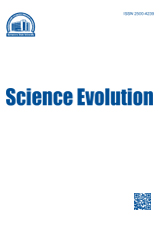Russian Federation
Kaliningrad, Kalinigrad, Russian Federation
Russian Federation
Russian Federation
Russian Federation
CSCSTI 27.01
CSCSTI 31.01
CSCSTI 34.01
Lactic acid bacteria form a wide range of bacteriocins, the compounds that inhibit ineligible food product microflora. New producers are vigourously searched and bacteriocin properties are actively studied. Creation of new antimicrobial peptides consisting of C- and N-parts of various bacteriocins is of great concern. Based on co-use of nisin, lactocin and enterocin, their antimicrobial effect is proved to increase with the well matching combination of bacteriocins of different origin. Either, development of genetically altered strains of fungi and bacteria is promising that are capable of producing one or more enterococcus bacteriocins and other LAB. This work describes procedures to integrate structures producing Lactobacillus paracasei and Pediococcus acidilactici strain bacteriocins isolated from fermented milk products used by people residing in the south of the Western Siberia into E. coli BL21DE3 competent cells using the commercial vector Mud5005-13. The strains obtained were analyzed for successful integration by induction of pathogenic bacteria by lysates and it was shown that, irrespective of the induction time, the recombinant strain effectively synthesizes the bacteriocin construct integrated. Best conditions were developed for the strain culturing to achieve the highest yield of the recombinant peptide into the culture medium comprising of: medium № 6 containing the following per 1 liter: tripton - 12 g, sucrose - 12 g, sodium acetate 0.5 g, magnesium sulfate - 0.2 g, ammonium sulfate - 0.5 g, sodium chloride - 6 g, calcium chloride - 2 g; culturing temperature - 40°C; agitation speed - 200 rpm; aeration value is 1 l/l*min.
Lactic acid bacteria, bacteriocins, antimicrobial peptides, milk products, E. coli, enzymatic hydrolysates
1. 1. Aesen I.M., Markussen S., Moretro T., Katla T., Axelsson L., and Naterstad K. Interactions of the bacteriocins sakacin P and nisin with food constituents. International Journal of Food Microbiology, 2003, vol. 87, iss. 1-2, pp. 35-43. DOI:https://doi.org/10.1016/S0168-1605(03)00047-3.
2. 2. Bevilacqua A., Rosaria M., and Sinigaglia M. Application of alternative food-preservation technologies to enhance food safely and stability. Benthame Books Publ., 2010. 215 p.
3. 3. Atrih A., Rekhif N., Moir A.J.G., Lebrihi A., and Lefebvre G. Mode of action, purification and amino acid sequence of plantaricin C19, an anti-Listeria bacteriocin produced by Lactobacillus plantarum C19. International Journal of Food Microbiology, 2001, vol. 68, iss. 1-2, pp. 93-104. DOI:https://doi.org/10.1016/S0168-1605(01)00482-2.
4. 4. Babich O.O., Pokrovsky V.S., Anisimova N.Y., Sokolov N.N., and Prosekov A.Yu. Recombinant L-phenylalanine ammonia lyase from Rhodosporidium toruloides as a potential anticancer agent. Biotechnology and Applied Biochemistry, 2013, vol. 60, iss. 3, pp. 316-322. DOI:https://doi.org/10.1002/bab.1089.
5. 5. Mozzi F., Raya R.R., and Vignolo G.M. Biotechnology of lactic acid bacteria: Novel applications. USA: Blackwell Publ., 2010. 393 p.
6. 6. De Vuyst L. Bacteriocins of lactic acid bacteria: microbiology, genetics and applications. London: Blackie academic and professional, 1994. 539 p.
7. 7. Deegan L.H., Cotter P.D., Hill C., and Ross P. Bacterlocins: Biological tools for bio-preservation and shelf-life extension. International Dairy Journal, 2006, vol. 16, iss. 9, pp. 1058-1071. DOI:https://doi.org/10.1016/j.idairyj.2005.10.026.
8. 8. Jimenez-Dias R., Rios-Sanchez R.M., Desmazeaud M., Ruiz-Barba J.L., and Piard J.C. Plantaricins S and T, Two new bacteriocins produced by Lactobacillus plantarum LPCO 10 isolated from a green olive fermentation. Applied and Environmental Microbiology, 1993, vol. 59, iss. 5, pp. 1416-1424. Available at: https://ncbi.nlm.nih.gov/pmc/articles/PMC182098/
9. 9. Klaenhammer T.R. Genetics of bacteriocins produced by Lactic Acid Bacteria. Fems Microbiology Reviews, 1993, vol. 12, iss. 1-3, pp. 39-86. DOI:https://doi.org/10.1111/j.1574-6976.1993.tb00012.x.
10. 10. Holzapfel W.H. Biological preservation of foods with reference to protective cultures, bacteriocins and food-grade enzymes. International Journal of Food Microbiology, 1995, vol. 24, iss. 3, pp. 343-362. DOI:https://doi.org/10.1016/0168-1605(94)00036-6.
11. 11. Prosekov A., Ulrikh E., Kozlova O., Dishluk L., and Arkhipov A. Defining compositions of vegetative analogs for pharmaceutical gelatin for obtaining soft capsules. Advances in Environmental Biology, 2014, vol. 8, no. 10, pp. 295-298.
12. 12. Prosekov A., Babich O., Sukhikh S., Noskova S., and Dushlyuk L. The proteolytic activity research of the lactic acid microorganisms of different taxonomic groups. World Applied Sciences Journal, 2013, vol. 23, no. 10, pp. 1284-1290.
13. 13. Lacroix C. Protective cultures, antimicrobial metabolites and bacteriophages for food and beverage biopreservation. England: Woodhead Publishing Ltd, 2011. 501 p.
14. 14. Van Reenen C.A., Chikindas M.L., Van Zyl W.H., and Dicks L.M.T. Characterization and heterologous expression of a class IIa bacteriocin, plantaricin 423 from Lactobacillus plantarum 423, in Saccharomyces cerevisiae. International Journal of Food Microbiology, 2003, vol. 81, pp. 29-40. Available at: https://doi.org/10.1016/S0168-1605(02)00164-2.
15. 15. Schillinger U., Becker B., Vignolo G., and Holzapfel W.H. Efficacy of nisin in combination with protective cultures against Listeria monocytogenes Scott A in tofu. International Journal of Food Microbiology, 2001, vol. 71, iss. 2-3, pp. 159-168. Available at: https://doi.org/10.1016/S0168-1605(02)00174-5.
16. 16. Ross R.P., Morgan S., Hill C. Preservation and fermentation: past, present and future. International Journal of Food Microbiology, 2002, vol. 79, iss. 1-2, pp. 3-16. Available at: https://doi.org/10.1016/S0168-1605(02)00174-5.
17. 17. Settanni L., Massitti O., Van Sinderen D., and Corsetti A. In situ activity of a bacteriocin-producing Lactococcus lactis strain. Influence on the interactions between lactic acid bacteria during sourdough fermentation.Journal of Applied Microbiology, 2005, vol. 99, iss. 3, pp. 670-681. DOI:https://doi.org/10.1111/j.1365-2672.2005.02647.x.
18. 18. Todorov S.D. and Dicks L.M.T. Partial characterisation of bacteriocins produced by four lactic acid bacteria isolated from regional South African barley beer. Annals of Microbiology, 2004, vol. 54, iss. 4, pp. 51-61. Available at: http://hdl.handle.net/10019.1/11877.










